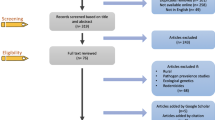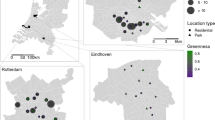Abstract
Rats are abundant and ubiquitous in urban environments. There has been increasing attention to the need for evidence-based, integrated rat management and surveillance approaches because rats can compromise public health and impose economic costs. Yet there are few studies that characterize rat distributions in sewers and there are no studies that incorporate the complexity of sewer networks that encompass multiple sewer lines, all comprised of their own unique characteristics. To address this knowledge gap, this study identifies sewer characteristics that are associated with rat presence in the city of Seattle’s urban sewer system. We obtained sewer baiting data from 1752 geotagged manholes to monitor rat presence and constructed generalized additive models to account for spatial autocorrelation. Sewer rats were unevenly distributed across sampled manholes with clusters of higher rat presence at upper elevations, within sanitary pipes, narrower pipes, pipes at a shallower depth, and older pipes. These findings are important because identifying features of urban sewers that promote rat presence may allow municipalities to target areas for rat control activities and sewer maintenance. These findings suggest the need to evaluate additional characteristics of the surface environment and identify the factors driving rat movement within sewers, across the surface, and between the surface and the sewers.



Similar content being viewed by others
Availability of data and material
Cleaned data is available on Dryad (https://doi.org/10.5061/dryad.mw6m90603).
Code availability
Codes are available on Dryad (https://doi.org/10.5061/dryad.mw6m90603).
References
2016 Rainfall - Seattle Weather Blog. (2020). https://www.seattleweatherblog.com/rain-stats/rainfall-2016/. Accessed 16 Jul 2020
2017 Rainfall - Seattle Weather Blog. (2020). https://www.seattleweatherblog.com/rain-stats/rainfall-2017/. Accessed 16 Jul 2020
Almeida A, Corrigan R, Sarno R (2013) The economic impact of commensal rodents on small businesses in Manhattan’s chinatown: trends and possible causes. Suburb Sustainability 1(1). https://doi.org/10.5038/2164-0866.1.1.2
Barnett SA (1946) Rat control in towns. Ann Appl Biol 6:297–303
Barnett SA (1958) Experiments on neophobia in wild and laboratory rats. Br J Psychol 49(3):195
Bedoya-Perez MA, Ward MP, Loomes M, McGregor IS, Crowther MS (2021) The effect of COVID-19 pandemic restrictions on an urban rodent population. Sci Rep 11(12957)
Bentley EW, Bathard AH, Riley JD (1959) The rates of recovery of sewer rat populations after poisoning. J Hyg 57(3):291–298
Booth D (2015) Building capacity: Analytics build capacity for Health Departments combatting rodent infestations. J Environ Health 77(8):30–33. https://doi.org/10.2307/26330231
Bosslet L (2015) Rats: One more reason you should shut the toilet lid. Public Health Insider. https://publichealthinsider.com/2015/10/28/rats-one-more-reason-you-should-shut-the-toilet-lid/. Accessed 19 Apr 2022
Brooks JE (1962) Methods of sewer rat control. Proc 1st Vertebr Pest Conf https://digitalcommons.unl.edu/vpcone/17
Brunton CFA, Macdonald DW, Buckle AP (1993) Behavioural resistance towards poison baits in brown rats, Rattus norvegicus. Appl Anim Behav Sci 38:159–174
Byers KA, Lee MJ, Bidulka JJ, Patrick DM, Himsworth CG (2019) Rat in a cage: Trappability of urban Norway rats (Rattus norvegicus). Front Ecol Evol 7:1–10. https://doi.org/10.3389/fevo.2019.00068
Byers KA, Lee MJ, Donovan CM, Patrick DM, Himsworth CG (2017) A novel method for affixing Global Positioning System (GPS) tags to urban Norway rats (Rattus norvegicus): feasibility, health impacts and potential for tracking movement. J Urban Ecol. https://doi.org/10.1093/jue/jux010
Channon D (2006) Behavioural and population studies of Sewer Rats (Rattus norvegicus). Dissertation, University of Surrey
Channon D, Calderon S, Groves L, Torrance F (2013) Food waste disposal units and their possible impact on sewer rat populations in the United Kingdom. Water Pract Technol 8(2):202–214. https://doi.org/10.2166/wpt.2013.022
Channon D, Channon E, Roberts T, Haines R (2006) Hotspots: Are some areas of sewer network prone to re-infestation by rats (Rattus norvegicus) year after year? Epidemiol and Infect 134(1):41–48. https://doi.org/10.1017/S0950268805004607
Channon D, Cole M, Cole L (2000) A long-term study of Rattus norvegicus in the London Borough of Enfield using baiting returns as an indicator of sewer population levels. Epidemiol Infect 125(2):441–445. https://doi.org/10.1017/S095026889900446X
Channon D, Cook N, Hook H, Knowles L (2004) Preferred locations in sewers; a covert study of Rattus norvegicus behavior. Int Pest Control 46(4):194–196
Channon D, Roberts T, Verity J (2022) Rats and Interceptors, A study of sewer rat (Rattus norvegicus) behaviour when encountering this feature of sewerage engineering. Int Pest Control 44(4):172–176
City of Seattle (2020a) Integrated Pest Management - Seattle Parks and Recreation. http://www.seattle.gov/parks/about-us/policies-and-plans/integrated-pest-management. Accessed 15 Sept 2020a
City of Seattle (2020b) Seattle Open Data Program. https://data.seattle.gov/browse?q=dso. Accessed 16 Sept 2020b
Clapperton B (2006) A review of the current knowledge of rodent behaviour in relation to control devices. Sci Conserv 263:1–55
Clinton JM (1969) Rats in urban America. Public Health Rep 84(1):1–7. https://doi.org/10.2307/4593484
Colvin BA, Swift TB, Fothergill FE (1998) Control of Norway rats in sewer and utility systems using pulsed baiting methods. Proc Vertebr Pest Conf. https://doi.org/10.5070/v418110082
de Masi E, Vilaça P, Tereza Pepe Razzolini M (2009) Environmental conditions and rodent infestation in Campo Limpo district, São Paulo municipality, Brazil. Int J Environ Health Res 19(1):1–16. https://doi.org/10.1080/09603120802126670
Dormann CF, McPherson JM, Araújo MB, Bivand R, Bolliger J, Carl G, Davies RG, Hirzel A, Jetz W, Kissling DW, Kühn I, Ohlemüller R, Peres-Neto PR, Reineking B, Schröder B, Schurr F, Wilson R (2007) Methods to account for spatial autocorrelation in the analysis of species distributional data: A review. Ecography 30(5):609–628. https://doi.org/10.1111/j.2007.0906-7590.05171.x
Esri Inc (2019) ArcGIS Pro. Esri Inc.Version 2.6.0
Feng AYT, Himsworth CG (2014) The secret life of the city rat: a review of the ecology of urban Norway and black rats (Rattus norvegicus and Rattus - black rattus). Urban Ecosyst 17:149–162. https://doi.org/10.1007/s11252-013-0305-4
Galán-Puchades MT, Sanxis-Furió J, Pascual J, Bueno-Marí R, Franco S, Peracho V, Montalvo T, Fuentes MV (2018) First survey on zoonotic helminthosis in urban brown rats (Rattus norvegicus) in Spain and associated public health considerations. Vet Parasitol 259:49–52. https://doi.org/10.1016/j.vetpar.2018.06.023
Garosi Y, Sheklabadi M, Conoscenti C, Pourghasemi HR, Van Oost K (2019) Assessing the performance of GIS- based machine learning models with different accuracy measures for determining susceptibility to gully erosion. Sci Total Environ 664:1117–1132. https://doi.org/10.1016/j.scitotenv.2019.02.093
Hagan JE, Moraga P, Costa F, Capian N, Ribeiro GS, Wunder EA, Felzemburgh RDM, Reis RB, Nery N, Santana FS, Fraga D, Dos Santos BL, Santos AC, Queiroz A, Tassinari W, Carvalho MS, Reis MG, Diggle PJ, Ko AI (2016) Spatiotemporal determinants of urban Leptospirosis transmission: Four-year prospective cohort study of slum residents in Brazil. PLoS Negl Trop Dis 10(1). https://doi.org/10.1371/journal.pntd.0004275
Heiberg AC (2009) Anticoagulant resistance: a relevant issue in sewer rat (Rattus norvegicus) control? Pest Manag Sci 65:444–449. https://doi.org/10.1002/ps.1709
Heiberg AC, Sluydts V, Leirs H (2012) Uncovering the secret lives of sewer rats (Rattus norvegicus): Movements, distribution and population dynamics revealed by a capturemarkrecapture study. Wildl Res 39(3):202–219. https://doi.org/10.1071/WR11149
Himsworth CG, Bidulka J, Parsons KL, Feng AYT, Tang P, Jardine CM, (2013) Ecology of Leptospira interrogans in Norway Rats (Rattus norvegicus) in an inner-city neighborhood of Vancouver, Canada. PLoS Negl Trop Dis 7(6). https://doi.org/10.1371/journal.pntd.0002270
Hosmer DW, Lemeshow S, Sturdivant RX (2013) Model-building strategies and methods for logistic regression. In: Appl Logist Regres, 3rd edn. John Wiley and Sons Inc, p 91
Krynitsky J, Legaria AA, Pai JJ, Garmendia-Cedillos M, Salem G, Pohida T, Kravitz AV (2020) Rodent arena tracker (rat): A machine vision rodent tracking camera and closed loop control system. Eneuro 7(3):1–9. https://doi.org/10.1523/ENEURO.0485-19.2020
Kulldorff M (2018) SaTScanTM Software for the spatial, temporal, and space-time scan statistics. Verson 8. http://www.satscan.org/
Lam R, Byers KA, Himsworth CG (2018) Beyond zoonosis: The mental health impacts of rat exposure on impoverished urban neighborhoods. J Environ Health 81(4):8–12
Mackie RA (1964) Three years of roof rat control in the sewers of San Diego. J Environ Health 27(1):482–486
Margulis HL (1977) Rat fields, neighborhood sanitation, and rat complaints in Newark. Geogr Rev New Jersey (2):221–231. https://about.jstor.org/terms
Mattsson J, Hedström A, Ashley RM, Viklander M (2015) Impacts and managerial implications for sewer systems due to recent changes to inputs in domestic wastewater - A review. J Environ Manag 161:188–197. https://doi.org/10.1016/j.jenvman.2015.06.043
Mohammadi MM (2019) Development of Condition Prediction Models For Sanitary Sewer Pipes. Dissertation, The University of Texas at Arlington
Mughini Gras L, Patergnani M, Farina M (2012) Poison-based commensal rodent control strategies in urban ecosystems: Some evidence against sewer-baiting. EcoHealth 9(1):75–79. https://doi.org/10.1007/s10393-0748-8
Murray MH, Sánchez CA, Becker DJ, Byers KA, Worsley-Tonks KEL, Craft ME (2019) City sicker? A meta-analysis of wildlife health and urbanization. Front Ecol Environ 17(10):575–583. https://doi.org/10.1002/fee.2126
Orkin (2019) Chicago ranked #1 city on Orkin’s top 50 rattiest cities list for fifth consecutive time. Orkin. https://www.orkin.com/press-room/rodents-infestations-top-cities-orkin. Accessed 19 July 2020
Osborne PE, Foody GM, Suárez-Seoane S (2007) Non-stationarity and local approaches to modelling the distributions of wildlife. Divers Distrib 13(3):313–323. https://doi.org/10.1111/j.1472-4642.2007.00344.x
Pascual J, Franco S, Bueno-Marí R, Peracho V, Montalvo T (2020) Demography and ecology of Norway rats, Rattus norvegicus, in the sewer system of Barcelona (Catalonia, Spain). J Pest Sci 93(2):711–722. https://doi.org/10.1007/s10340-019-01178-6
Peters SM, Pinter IJ, Pothuizen HHJ, de Heer RC, van der Harst JE, Spruijt BM (2016) Novel approach to automatically classify rat social behavior using a video tracking system. J Neurosci Methods 268:163–170. https://doi.org/10.1016/j.jneumeth.2016.02.020
Public Health Seattle & King County (2018) Rat in the toilet - It’s not an urban myth! https://kingcounty.gov/depts/health/environmental-health/animals/rat-prevention/~/media/depts/health/environmental-health/documents/rodents/rat-in-toilet-facts.ashx. Accessed 19 Apr 2022
Randrup TB, McPherson EG, Costello LR (2001) Tree root intrusion in sewer systems: Review of extent and costs. J Infrastruct Syst 7(1):26–31
Regnery J, Schulz RS, Parrhysius P, Bachtin J, Brinke M, Schäfer S, Reifferscheid G, Friesen A (2020) Heavy rainfall provokes anticoagulant rodenticides’ release from baited sewer systems and outdoor surfaces into receiving streams. Sci Total Environ. https://doi.org/10.1016/j.scitotenv.2020.139905
Robin X, Turck N, Hainard A, Tiberti N, Lisacek F, Sanchez JC, Muller M, Siegert S, Doering M (2021) Package‘ pROC.’ Display and Analyze ROC Curves. https://cran.r-project.org/web/packages/pROC/pROC.pdf. Accessed 13 Mar 2021
RStudio Team (2020) RStudio: Integrated Development for R. Version 1.3. PBC, Boston, MA
Snäll T, Fogelqvist J, Ribeiro PJ, Lascoux M (2004) Spatial genetic structure in two congeneric epiphytes with different dispersal strategies analysed by three different methods. Mol Ecol 13(8):2109–2119. https://doi.org/10.1111/j.1365-294X.2004.02217.x
Traweger D, Travnitzky R, Moser C, Walzer C, Bernatzky G (2006) Habitat preferences and distribution of the brown rat (Rattus norvegicus Berk.) in the city of Salzburg (Austria): implications for an urban rat management. J Pest Sci 79(3):113–125. https://doi.org/10.1007/s10340-006-0123-z
Western Regional Climate Center (2020) Seattle Tacoma Airport, WA - Average of Average Temperature (Degrees Fahrenheit). https://wrcc.dri.edu/cgi-bin/cliMAIN.pl?wa7473. Accessed 16 Jul 2020
Wood SN (2021a) Package “mgcv.” Mixed GAM Computation Vehicle with Automatic Smoothness Estimation. https://doi.org/10.1201/9781315370279. Accessed 13 Mar 2021a
Wood SN (2021b) Specifying generalized additive models. Documentation for Package “mgcv” Version 1.8–34.
Acknowledgements
We would like to thank the sewer baiting program crew at the Seattle & King County Public Health’s Environmental Health Services Division for conducting sewer baiting at the sampled manholes, collecting the bait consumption data, and recording geotagged data in ArcGIS Pro.
Funding
The study was supported by Canadian Agricultural Partnership.
Author information
Authors and Affiliations
Contributions
XG, ML, KB, and CH contributed to the conception and design of this study. Sample collection was coordinated by LH. Data analyses were performed by XG, ML, KB, and CH. The first draft of the manuscript was written by XG. All authors contributed to revising the manuscript and approved the final manuscript for submission. Funding was acquired by CH.
Corresponding author
Ethics declarations
Ethics approval
Not applicable.
Conflicts of interest
The authors have no conflicts of interest to declare that are relevant to the content of this manuscript.
Supplementary information
Below is the link to the electronic supplementary material.
Rights and permissions
About this article
Cite this article
Guo, X., Lee, M.J., Byers, K.A. et al. Characteristics of the urban sewer system and rat presence in Seattle. Urban Ecosyst 25, 1699–1709 (2022). https://doi.org/10.1007/s11252-022-01255-2
Accepted:
Published:
Issue Date:
DOI: https://doi.org/10.1007/s11252-022-01255-2




